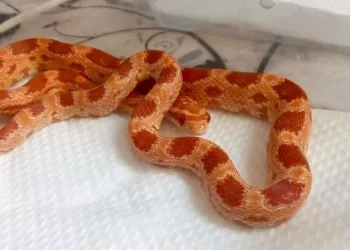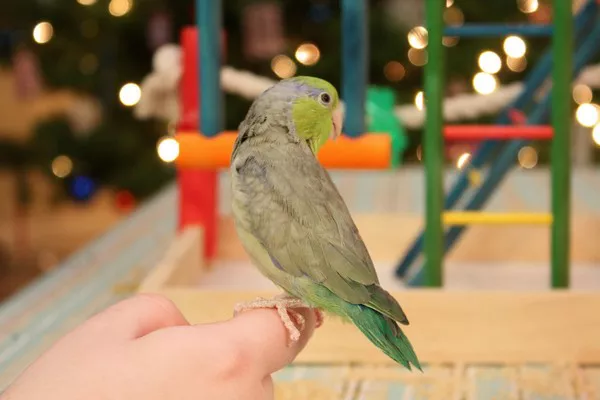Corn snakes (Pantherophis guttatus) are fascinating reptiles native to the southeastern United States, celebrated for their striking appearance, docile temperament, and adaptability in captivity. Understanding their activity patterns throughout the year is crucial for both their care in captivity and their conservation in the wild. This article explores the seasonal activity patterns of corn snakes, focusing on their behavioral changes, environmental influences, and implications for both wild populations and pet care.
Introduction to Corn Snake Activity Patterns
Corn snakes exhibit a variety of behaviors influenced by their environment, including temperature fluctuations, photoperiod changes, and seasonal food availability. These behaviors are not just a result of their biology but also a response to the conditions of their habitat. Understanding when corn snakes are most active involves examining their life cycle, reproductive habits, and survival strategies in different seasons.
Seasonal Behavior and Activity
Spring
In the wild, spring is a crucial time for corn snakes. As temperatures rise and days lengthen, these snakes emerge from hibernation, a period known as brumation in reptiles. During brumation, their metabolic rate slows, and their activity levels drop significantly.
Emergence from Brumation: Spring marks the end of brumation, and corn snakes become more active. They search for food, mates, and suitable habitats. The increase in temperature stimulates their metabolism and behavior. For pet corn snakes, this is often a time when owners may notice increased activity as the snake adjusts to warmer conditions.
Feeding and Growth: In the wild, the availability of prey increases with the warming temperatures. This prompts corn snakes to eat more frequently, supporting growth and energy needs after the long period of reduced activity. Captive corn snakes may also show increased appetite during this period, aligning with their natural instincts to capitalize on the abundance of food.
Summer
Summer is typically the peak period of activity for corn snakes. The warm temperatures and longer daylight hours create an ideal environment for these ectothermic reptiles.
Foraging and Hunting: During summer, corn snakes are highly active, foraging for prey more frequently. Their activity levels are at their highest, as they take advantage of the warm weather to hunt and thermoregulate. This period is characterized by increased movement, as corn snakes explore their territory and seek out food.
Reproduction: Summer is also the breeding season for corn snakes. Males become more active in their search for females, engaging in courtship behaviors and mating. Female corn snakes lay their eggs in late spring to early summer, and the incubation period extends through the warmer months. This reproductive activity contributes to the overall increased activity levels observed during summer.
Hydration Needs: The warmer temperatures also necessitate increased hydration. Corn snakes will seek out water sources more frequently to maintain their bodily functions and prevent dehydration.
Autumn
As autumn approaches, the temperatures begin to drop, and corn snakes start to prepare for the cooler months ahead.
Preparation for Brumation: Autumn is a transitional period where corn snakes begin to reduce their activity in preparation for brumation. They focus on consuming large meals to build up fat reserves that will sustain them through the period of reduced activity.
Behavioral Changes: With decreasing temperatures and shorter days, corn snakes become less active. They spend more time in shelter, reducing their movement as they adjust to the changing conditions. For pet owners, this might mean observing a decrease in activity and feeding frequency.
Shelter Seeking: In the wild, corn snakes seek out suitable shelters to spend the cooler months. This can include burrows, leaf litter, or abandoned animal nests. Captive snakes may show similar behavior, seeking out warmer or more secure areas in their enclosure.
Winter
Winter is a period of reduced activity for corn snakes, particularly in regions where temperatures drop significantly.
Brumation: In the wild, corn snakes enter brumation during the winter months. Their metabolic rate slows dramatically, and they become lethargic. This period of inactivity helps them conserve energy when food is scarce and temperatures are low.
Captive Care: In captivity, brumation can be managed by reducing the temperature in the snake’s enclosure, though not all pet corn snakes require this period of dormancy. For those that do, ensuring they have a proper hibernation setup is essential for their health.
Monitoring Health: Even during brumation, it’s important for pet owners to monitor their snakes’ health. Any signs of illness or abnormal behavior should be addressed promptly, as reduced activity can sometimes mask underlying health issues.
Environmental Influences on Activity Patterns
The activity patterns of corn snakes are heavily influenced by environmental factors such as temperature, humidity, and photoperiod. Understanding these factors helps explain their seasonal behavior.
Temperature
Ectothermic Regulation: As ectothermic reptiles, corn snakes rely on external temperatures to regulate their body heat. Warmer temperatures increase their activity levels, while cooler temperatures slow them down. This dependence on environmental temperature explains the seasonal fluctuations in their activity.
Thermoregulation: During the warmer months, corn snakes engage in thermoregulation by basking in the sun to raise their body temperature. Conversely, in cooler weather, they seek out warmer microhabitats to maintain their body heat.
Photoperiod
Daylength Effects: The length of daylight hours affects corn snake activity patterns. Longer days in spring and summer correspond with increased activity levels, while shorter days in autumn and winter signal a period of reduced activity. This photoperiodic response helps synchronize their biological processes with seasonal changes.
Humidity
Hydration and Activity: Humidity levels also play a role in corn snake activity. High humidity levels, common in their natural habitat, can enhance their activity levels and reduce the risk of dehydration. Conversely, low humidity can lead to decreased activity and potential health issues.
Implications for Pet Care
Understanding the seasonal activity patterns of corn snakes is crucial for their care in captivity. Pet owners should consider these patterns to ensure their snakes remain healthy and comfortable throughout the year.
Enclosure Temperature
Seasonal Adjustments: Adjusting the temperature in the snake’s enclosure to mimic seasonal changes can help maintain their natural activity patterns. Providing a gradient of temperatures allows corn snakes to thermoregulate effectively, supporting their overall health.
Heating and Cooling: Implementing appropriate heating and cooling systems ensures that the enclosure remains within the optimal temperature range for the snake’s needs. This is especially important during seasonal transitions.
Feeding Practices
Seasonal Feeding: During periods of increased activity, such as spring and summer, corn snakes may require more frequent feeding. Monitoring their appetite and adjusting feeding schedules accordingly can help maintain their health and prevent obesity.
See Also: Do Corn Snakes Have Venom?
Pre-Brumation Feeding: In preparation for brumation, it’s important to ensure that corn snakes are well-fed and have adequate fat reserves. This helps them sustain themselves through the period of reduced activity.
Environmental Enrichment
Providing Hides and Shelters: Ensuring that the enclosure has appropriate hides and shelters supports the snake’s natural behaviors, especially during periods of reduced activity. These features provide security and comfort, which are essential for their well-being.
Maintaining Humidity: Regularly monitoring and adjusting the humidity levels in the enclosure helps prevent health issues and supports the snake’s activity levels. Using a hygrometer can help track humidity and make necessary adjustments.
Conservation and Wild Populations
Understanding the seasonal activity patterns of corn snakes is also important for their conservation in the wild. Changes in climate, habitat loss, and other environmental factors can impact their activity and survival.
Climate Change
Impact on Activity: Climate change can alter the seasonal temperature patterns and affect corn snake behavior. Warmer winters and unpredictable weather can disrupt their natural brumation cycles and impact their feeding and reproductive success.
Conservation Efforts: Monitoring and researching the effects of climate change on corn snakes helps inform conservation strategies. Protecting their natural habitats and mitigating climate change effects are crucial for preserving their populations.
Habitat Loss
Effects on Activity: Habitat loss due to urbanization and agricultural expansion can limit the availability of suitable shelter and food sources for corn snakes. This can lead to changes in their activity patterns and overall health.
Conservation Actions: Efforts to conserve and restore natural habitats support the survival of corn snakes and other wildlife. Creating and maintaining protected areas helps ensure that corn snakes have access to the resources they need throughout the year.
Conclusion
Corn snakes exhibit distinct seasonal activity patterns influenced by temperature, photoperiod, and environmental factors. Their behavior changes from increased activity in the warmer months to reduced activity during cooler periods. Understanding these patterns is essential for both their care in captivity and their conservation in the wild.
By adjusting care practices to align with their natural activity cycles, pet owners can ensure the health and well-being of their corn snakes. Additionally, understanding the broader environmental factors affecting corn snake populations helps inform conservation efforts and supports the preservation of this remarkable species.
Whether in the wild or in captivity, the seasonal rhythms of corn snakes reflect their adaptability and resilience, showcasing their intricate relationship with their environment. As we continue to learn more about these captivating reptiles, we enhance our ability to care for them and protect their natural habitats, ensuring their continued survival for generations to come.
Related Topics:
























